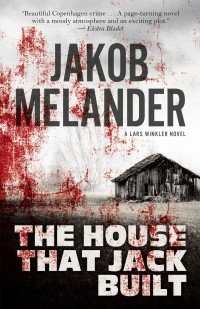Copenhagen detective Lars Winkler can’t seem to get much respect lately. His wife has left him for his boss Ulrik, and when we catch up with him in the book’s opening he has just returned to the Homicide and Violent Crime Unit after taking some time off. The mood in the office upon his return is awkward to say the least. Alliances have been drawn, mostly on the other side of the squad room, which is where we meet the rest of the team: Frank, Lisa and Kim A, who has a beef with Lars dating back to their academy days. His only friends right now are his new partner Sanne Bissen, his old friend Toke Hansen, and a personal cache of amphetamines.
As Lars struggles to get back on track he unpacks things in his new apartment, but not in time to adequately host his 16-year old daughter Maria, who is not talking to him anyway. She is mostly busy with her new boyfriend, who intrigues Lars. In one rewarding scene, he bonds with the boy over some vintage Rolling Stones LPs while discussing the Boston Strangler.
A prostitute named Mira Vanin is found shot to death, her eyes surgically removed. Her body was injected with a preservative, and the remains of a glass eye are found nearby. Then Abeiuwa narrowly escapes the same fate, and both are victims of the same perpetrator, now dubbed The Sandman. Without any solid leads the Bukoshi Brothers, who pimp the local Vesterbro prostitutes, become prime suspects by default.
Lars can’t stop thinking about The Sandman, but Ulrik assigns him instead to a Violent Crime Unit case – that of a serial rapist. An attempt to lure the rapist with a decoy goes wrong and Lars shoulders the blame, facing internal complaints about his handling of the case. With his career now all but extinct, Lars thinks of quitting but first he must nab the rapist who appears to be toying with them.
Intermittent flashbacks to World War II tell the story of a mysterious family harbouring resistance fighters in the basement, only to kill them later on. The drama plays out from the point of view of a little girl who nurses them before they are brutally murdered, their eyes removed by the family’s patriarch. The House That Jack Built, like one or two other Scandinavian crime novels, toggles between WWII backstory and contemporary urban crime drama. An historical psychopath, complete with a lab, dark cellar, and dusty bottles of horrific specimens, lurks in the past while red herrings in the present promise to unite the two stories. The successfulness of this approach is mixed.
All the while, Lars doesn’t stop thinking about the Sandman case and receives updates from Sanne, who has become a love interest. After a slow start, wherein Melander develops the relationship between Lars and his daughter, you’ll have to hold on almost until the very end to see where things stand with the investigation and his personal life. The suspense ramps up as the rapist case inevitably coincides with the Sandman one. While quite explosive and gripping, the quick wrap-up in the end seems too tidy and sudden.
With this debut novel, Meander invites comparisons with Jo Nesbo’s Harry Hole series. Like his Norwegian counterpart, the author is a former rocker turned crime novelist whose gruff yet endearing detective redeems himself in the 11th hour, but not without making enemies. Melander believes in his characters, but you might need more convincing. The most vibrant character in the book is probably Copenhagen itself. The city is vividly described inside and out, effectively employing the street views to establish mood and office views to reflect their occupants’ lot in life.
For more novels set in Copenhagen, click here.
House of Anansi Press
Print
£10.23
CFL Rating: 3 Stars









